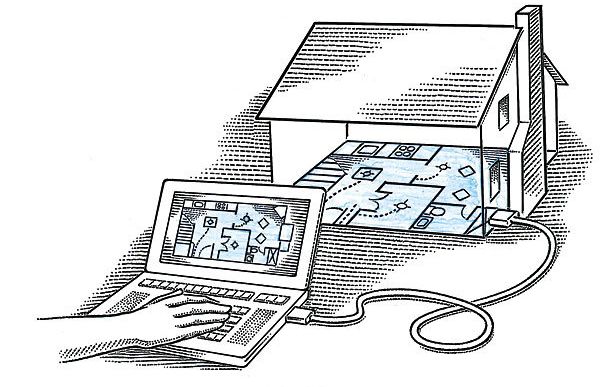Energy-Modeling Software: Is It Worth Your Time and Money?
Even the most sophisticated programs have limits.

Synopsis: In this article, senior editor Martin Holladay looks at energy-modeling software in general, then provides information on a number of the most commonly used programs. He identifies two problems with using the software: First, it takes a long time to enter all the required inputs, some of which are difficult to assess and can seem unrelated to energy use. Second, because many relevant factors can’t be modeled, the results of some programs may not be accurate enough to be useful. Moreover, energy use is driven not only by envelope design, but by occupant behavior. Still, most energy models are fairly accurate when applied to new homes. They are less so with existing homes. For builders unfamiliar with energy-modeling software, Holladay recommends trying a free program first, then purchasing a more robust program to better integrate energy modeling into the building routine.
As residential energy codes get more stringent, designers and builders can’t avoid an increasing focus on energy efficiency. So what’s a good way for designers to get a ballpark estimate of future energy bills? One way is to look at the utility bills of a comparable nearby home. In most cases, though, energy modelling software is used for energy estimates.
Some energy modelling programs can be downloaded for free, while others cost thousands of dollars. In general, you get what you pay for, but the free versions are actually pretty good. However, none of these programs, whether free or for sale, will deliver meaningful information unless the user understands the program’s limitations.
Different tools for different tasks
One of the most common types of energy modelling is a Manual J calculation to determine the size of heating or cooling equipment. (It’s called a Manual J calculation because it follows the Manual J method developed by the Air Conditioning Contractors of America.)
Another type of energy modelling is performed for new homes to compare the likely effects of various options, such as more insulation or better windows. Common programs for this purpose include REM/Design (a cousin to the REM/Rate program used by HERS raters), eQuest, HEED, HOT2000 (a Canadian program), BEopt (a tool for designing net-zero-energy homes), and the Passive House Planning Package (PHPP), a spreadsheet that helps designers to meet the Passive House standard developed in Germany.
To prove compliance with energy codes, most builders use a program called REScheck. Some states, however, have energy codes that require state-specific software programs. Florida builders usually use Energy Gauge software, while California builders need Title 24 compliance software (EnergyPro or Micro Pas). Energy researchers and consultants who need a sophisticated program can choose from programs like DOE-2, Energy-10, EnergyPlus, and TRNSyS.
Budget plenty of time for the task
There are at least two downsides to using energy modelling software. First, it takes a long time to enter all the required inputs. Second, the results some programs provide may not be accurate enough to be useful, in part because many relevant factors can’t be modelled.
Most programs require you to measure the size of every room and to specify the R-value of the basement insulation, the wall insulation, and the ceiling insulation. Then you measure each window, input the direction and glazing specifications, and describe the heating and cooling equipment. In most cases, you estimate or measure the home’s air-leakage rate.
In theory, programs with many inputs should be more accurate than those with fewer inputs, so software designers usually make deliberate trade-offs between accuracy and usability. At least one study, however, has called this into question. “Many existing models ask for inputs that are difficult to assess for example, window shading percentages, wind-exposure ratings, and soil conditions,” says Michael Blasnik, an energy consultant with decades of data-crunching experience. “One model asks you how many doorbells are in the house. Questions like that seem like a colossal waste of time. The moral is to get the big stuff right and don’t waste time with the other stuff.”
For information on how accurate the modeling systems are, click the View PDF button below.
Fine Homebuilding Recommended Products
Fine Homebuilding receives a commission for items purchased through links on this site, including Amazon Associates and other affiliate advertising programs.

A Field Guide to American Houses

The New Carbon Architecture: Building to Cool the Climate

Graphic Guide to Frame Construction


























